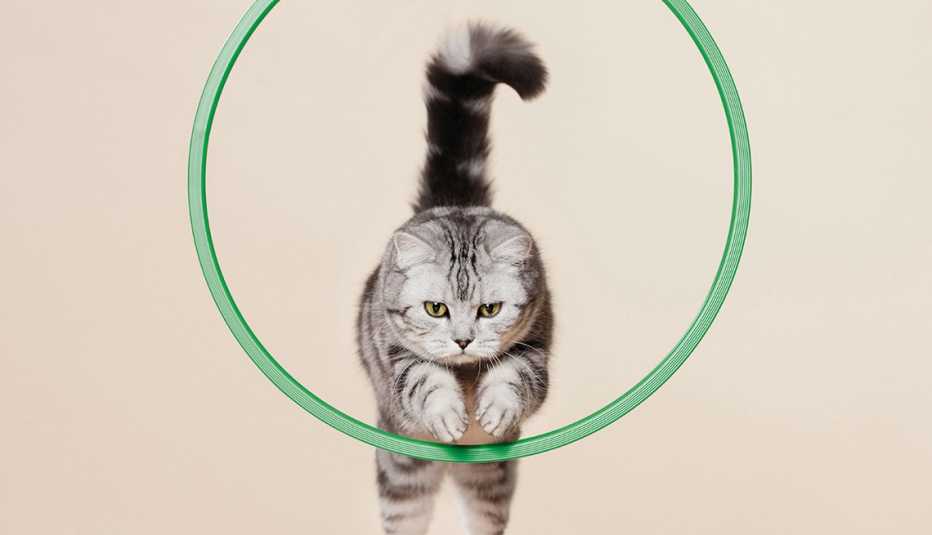Staying Fit


When Beth Deal told her husband, Pete, she wanted to bring their two 6-month-old ocicat kittens to an agility competition, he had no clue what he was getting into.
The couple, ages 63 and 64, drove three hours from their home in Hampton, Virginia, to Raleigh, North Carolina, to run their cats, Scamp and Rascal, over stairs and through tunnels and even to jump through rings on command.


AARP Membership— $12 for your first year when you sign up for Automatic Renewal
Get instant access to members-only products and hundreds of discounts, a free second membership, and a subscription to AARP the Magazine.
Pete, who used to show horses and loved the performance aspect, wanted more. “That was the way she got me hooked on it,” says Pete. “I had no idea what her plans were."
Six years, many trips across the country and numerous national awards later, Beth and Pete and their brood of ocicats have become top contenders in the competitive Feline Agility world.
But they and their challengers are far from the only cat fanciers getting into the sport. From rescuers aiming to give their cats a leg up with potential adopters to regular old pet owners, cat agility training has become an increasingly popular way to keep both humans and their cats connected and engaged.
"People see agility training like it's novel and cute but think, ‘My cat would never want to do this,’ “ says Samantha Bell, cat expert for Best Friends Animal Society. “I guarantee you your cat would want to do this.”
Tunnels, hoops and poles


At its core, a cat agility competition is fairly similar to its canine counterpart.
Cats are timed while running counterclockwise through a 20-by-20-foot course, enclosed with vision-obscuring netting. There are 10 different obstacles on the course, starting with a small platform with three steps up and three down, followed by nine other hurdles that gradually become more challenging.
After the feline competitor successfully makes it through a six-inch jump, there's a 10-inch jump, as well as tunnels, hoops and weave poles set out in a straight line that cats must bend and weave around.
The cats have 4 minutes, 30 seconds to complete the course — dogs usually get about 60 seconds — which starts the second a paw hits the stairs and stops when it reaches the floor after the final hoop jump. Most cats can do it in 30 seconds or less, with faster felines ringing in at under 20. Rascal has completed his course as fast as 12 seconds and Boo, another of the Deals’ ocicats, once made a 7.62-second run.


































































More on Home and Family
Having a Pet Feels Good, and It’s Also Good for Your Health
University of Michigan-AARP survey finds pets boost physical, mental well-being
Fur Real: Gadgets for Pampering (or Protecting) Your Pet
Try this tech for walkies, play, peace of mind and even cleaning the litter boxA Speech Therapist Taught Her Dog to "Talk"
Her fascinating new book explains how you can teach your own pup to speak